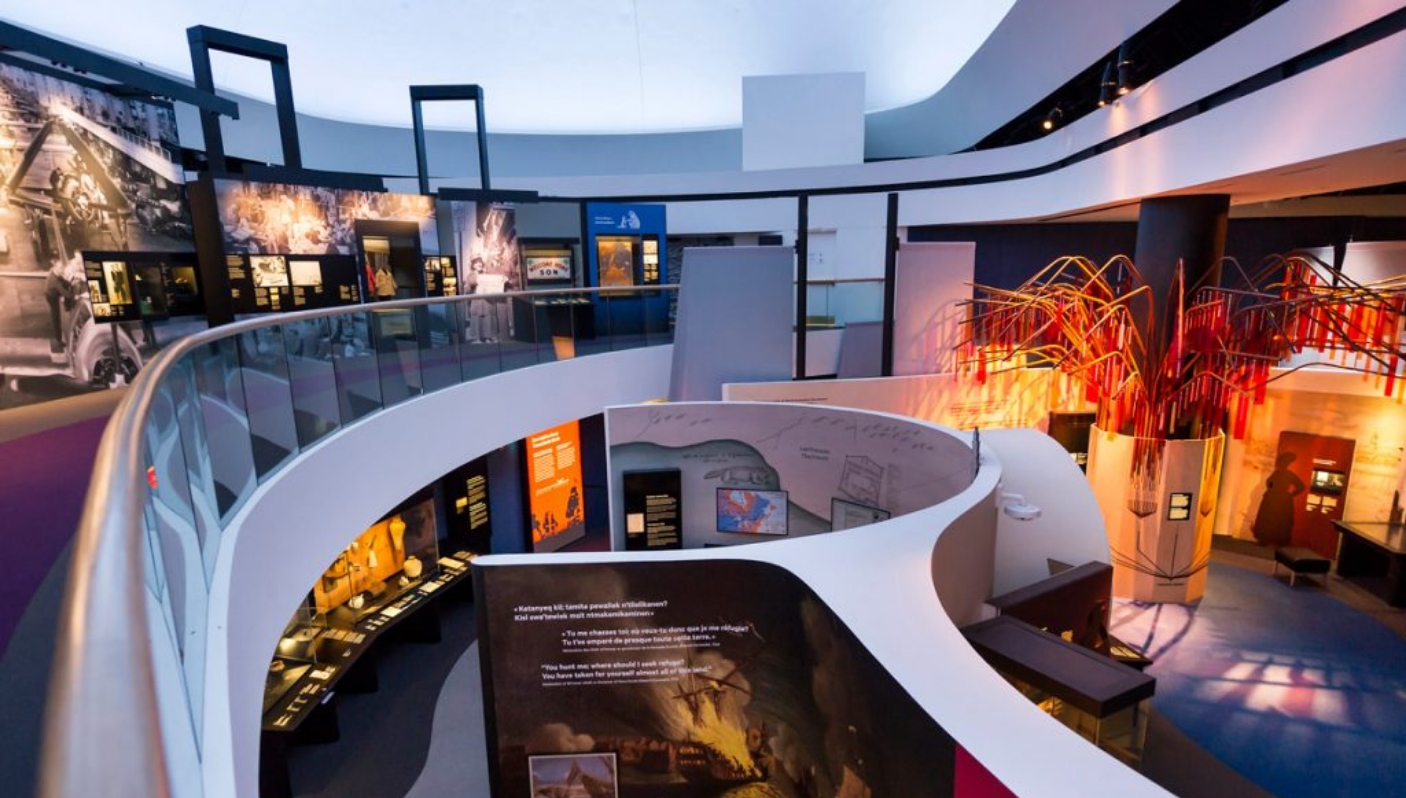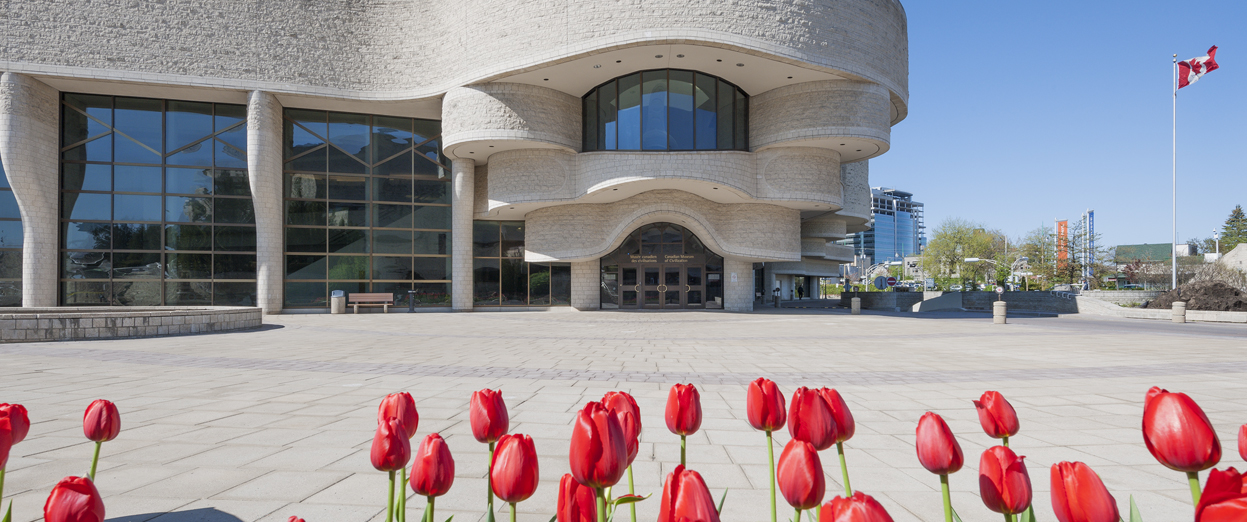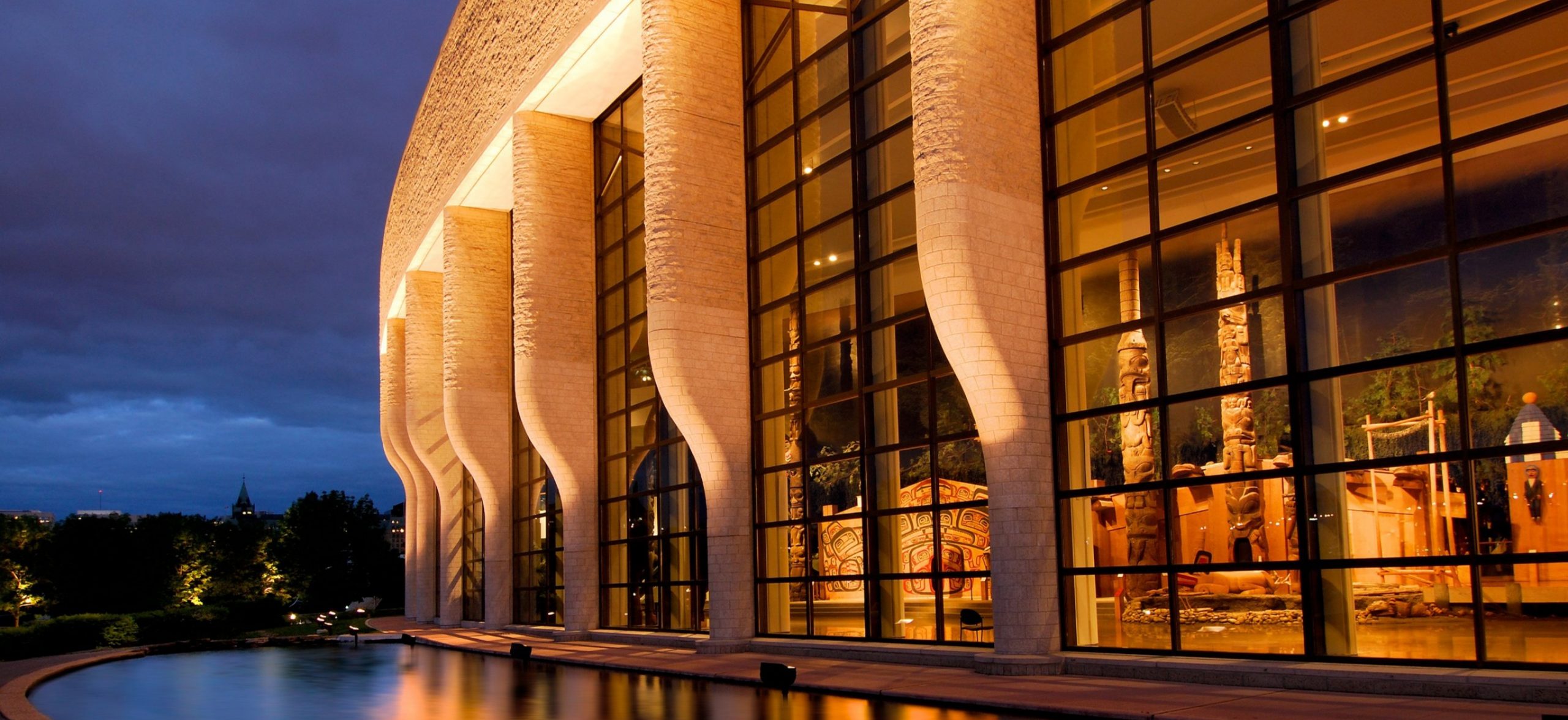Located on the traditional, unceded territory of the Algonquin Anishinabeg, the Canadian Museum of History is Canada’s largest museum of human history. As Canada’s most popular museum, it welcomes visitors to its celebrated complex in the heart of the National Capital Region.
With roots stretching back to 1856, it is one of Canada’s oldest public institutions. Focused on the histories and cultures of what is now Canada, it is a respected centre of museological excellence, both across the country and around the world. The corporation’s overarching mandate is to enhance Canadians’ knowledge, understanding and appreciation of the events, experiences, people and objects that reflect and have shaped Canada’s history and identity, while also enhancing their awareness of world history and cultures.
As a Crown corporation under the Museums Act, the Canadian Museum of History also oversees the Canadian War Museum and the Virtual Museum of New France. The Canadian War Museum is Canada’s national museum of military history and one of the world’s most respected museums for the study and understanding of armed conflict. Originally founded in 1880 around a small collection of militia objects, the War Museum collection now includes nearly half a million objects, and is housed in an iconic riverfront building on Ottawa’s historic LeBreton Flats. Launched in 1997 and expanded in 2011, the Virtual Museum of New France offers a comprehensive history of the period, and has become a go-to resource for scholars and the general public.
The Canadian Museum of History facility is also home to the Canadian Children’s Museum, a 500-seat theatre, and the 295-seat CINÉ+ movie theatre featuring a large 3D screen and giant dome. Ongoing exhibitions include the spectacular Grand Hall, the First Peoples Hall, and the Canadian History Hall. The Museum also features temporary exhibitions focusing on Indigenous, Canadian, and world histories and cultures. Many of these temporary exhibitions are developed in collaboration with Indigenous and other communities; others are produced by Canadian or international institutions.
In addition to sharing knowledge physically through travelling exhibitions, educational kits, publications, and lectures, the Museum offers a rich variety of digital content across its websites, including online exhibitions, podcasts, virtual tours, resources for teachers, games, activities, and access to collections and cutting-edge research.
Research activities are undertaken in a wide variety of areas, and in collaboration with communities and partners. Research is primarily concentrated in the areas of Canadian history, Indigenous histories, art, and cultures, archaeology, and cultural expression. In addition to scholarly research, staff conduct fieldwork in partnership with Indigenous and other cultural communities, engage in collaborative community-based projects, and work with institutions both at home and abroad. The Canadian Museum of History has in its care some 4 million items — from archaeological material and cultural belongings, to contemporary works of art and oral histories. The Canadian War Museum houses a further 500,000 items, including 14,000 paintings, sketches and sculptures in the world-famous Beaverbrook Collection of War Art.
In addition to administering the Canadian Museum of History, the Canadian War Museum, and the Virtual Museum of New France, the Canadian Museum of History manages Digital Museums Canada (DMC) with financial support from the Government of Canada. As the largest investment program of its kind in the country, DMC helps heritage, cultural and Indigenous organizations build digital capacity, while also bringing diverse made-in-Canada stories to the wider world.

Mandate, vision and values
Our mandate
To enhance Canadians’ knowledge, understanding and appreciation of events, experiences, people and objects that reflect and have shaped Canada’s history and identity, and also to enhance their awareness of world history and cultures.
Our vision
Dare to inspire tomorrow’s history.
Each day, our actions, decisions and inspiration will be driven by our vision statement.
Our values
Values are the cornerstone of any organization — they inform our behaviours, underpin how we perform our work, and provide a backdrop for aligned decision making. These four statements are intended to work hand-in-hand with our vision statement and strategic directions.
Act with integrity
- We underpin all we do with mutual respect, honesty and accountability to advance a thriving organizational culture.
- We ensure accuracy, objectivity and transparency to build trust across all our interactions.
- We accept our responsibility to always do better, adapt, and improve our actions and decisions.
Engage with curiosity
- We recognize and support the intrinsic value of every individual to create a positive and productive experience.
- We actively listen and create spaces and opportunities that give everyone a voice in an inclusive environment that promotes authenticity.
- We take pride in our work with an unwavering passion to expand our knowledge and understanding of museology.
Lead through change
- We choose to always apply innovative thinking, questioning and risk-taking to drive the best solutions.
- We lead and act with courage to foster impactful innovation and excellence.
- We boldly challenge the status quo through a proactive and respectful mindset.
Collaborate with purpose
- We recognize the power of sharing ideas, co-creating and working together to deliver on our mandate.
- We model open, transparent and respectful communication, creating a safe environment built on different perspectives.
- We accept our responsibility for stewardship that embraces diverse knowledge to provide an accessible and inclusive understanding of our history.

Our strategic directions for 2023–2029
These five directions are intended to help us better focus, re-energize and reinforce who we aspire to be as an organization moving forward.
- Foster an innovative workforce culture that promotes equity, respect and a sense of belonging
- Engage people from across Canada in diverse histories and stories
- Advance reconciliation and strengthen our commitment to recognizing the rights of Indigenous Peoples
- Build organizational resilience through sustainable practices
- Leverage technology to drive innovation and deepen access to Museum activities
Framework for Indigenous Relations
Reconciliation and relationships with Indigenous communities have been at the core of the Museum’s work for decades through repatriation of cultural material, collaborative models of exhibition development, and community-centred projects. The Museum recognizes its long and complex history as a colonial institution and is striving to advance reconciliation, with a continued recognition of Indigenous rights.
Through the Museums’ Framework for Indigenous Relations (PDF file), released in 2020, the Museum redefined its commitment to Indigenous peoples across Canada and created an action plan that aligned with the United Nations Declaration on the Rights of Indigenous Peoples, and the Truth and Reconciliation Commission Calls to Action. With transparency, accountability, and shared authority as key principles, the Museum is transforming its practices, policies, processes to better serve Indigenous communities and the Canadian public.
Learning from and being accountable for the past, listening to and collaborating with Indigenous peoples across the country, and centring Indigenous perspectives and voices will enable the Museums to further this important work.
This year, the Museum will finalize the implementation of the Framework, report on its progress, and begin its renewal, to ensure that our commitments to change continue to evolve and reflect the priorities of Indigenous peoples across the country.
